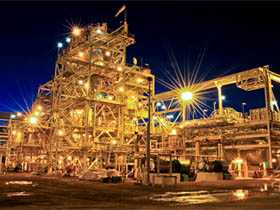The Nickel Institute recently published Nickel Compounds – the inside story, a 16-page guide full of information on the need for nickel in our modern day world. In this latest report the Nickel Institute states that the need for nickel will only grow. Of course production should also be in line with an increased demand. The International Nickel Study Group (INSG) recently published an article in Stainless Steel World magazine on changes in nickel production capacity.
Nickel metals, compounds and alloys
The silvery-white metallic element nickel has been used by humankind since millennia, and got involved in plating and alloys in the 18th century. The early 20th century meant a breakthrough for nickel, when was discovered that alloys based on nickel have excellent heat and corrosion resistance: the discovery of stainless steel.
Nickel compounds are derived from nickel metal and applied in several industries. Though by volume, nickel metal is the most important form of nickel, the nickel compounds play a crucial role in a wide range of industrial sectors and consumer goods. Let’s look at some examples hereof.
Surface treatment
By plating metals or other base materials with a coating that contains nickel, both wear resistance and corrosion resistance are realised. Nickel is also often used as an undercoat, since because of its adhesive properties, a subsequent layer of for example chromium will stick better to the base material.
Automotive industry
In the automotive industry the use of nickel is needed to assure both safety and longevity. Especially the zinc-nickel plating is effective with regards to corrosion resistance, and thus needed for automotive bolts, fasteners and components. One other important application of nickel in the automotive industry is to be found in the use of rechargeable batteries.
About the Nickel Institute
The Nickel Institute (NI) is the global association of the world’s primary nickel producers who together account for approximately 85% of worldwide annual nickel production outside China.
The NI’s mission is promoting and supporting the use of nickel in appropriate applications. Markets for new and existing nickel applications, including stainless steel, are supported.
Through their science division NiPERA the NI also undertakes scientific research that is relevant to human health and the environment.
Rechargeable batteries
For manufacturing different types of rechargeable batteries, both nickel metal and several nickel compounds are used. The Tesla Model S 85kWh battery pack for example contains over seven thousand nickel-containing cells. Battery powered cars are not the end station for Tesla though, as the recent news about the powerwall that Elon Musk’s company developed clearly shows.
The future of nickel
Looking ahead, the need for nickel will only grow. With an estimated world population of 9.6 billion people by 2050 (United Nations, World Population Prospects, 2012), nickel is needed in order to be able to provide enough housing, transportation and energy possibilities. The fact that nickel-containing materials are ideally suited for recycling makes the use of nickel also a very sustainable choice.


